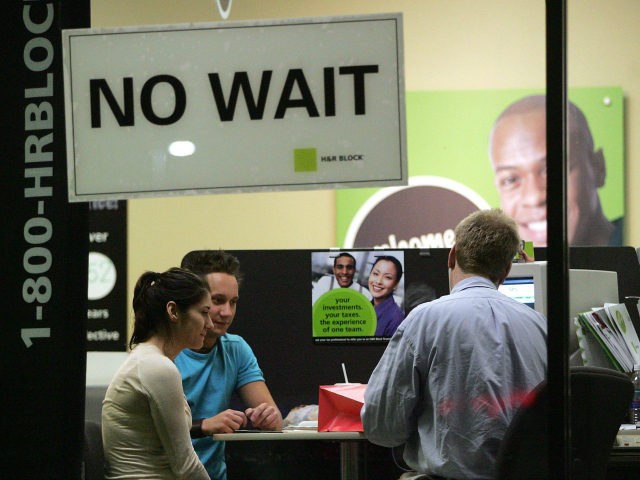Lawmaker Proposes Bill Allowing Americans to Dir
Post# of 65629

Directly
Contribute to Funding Border Wall When Filing Taxes
< >

Rep. Mark Green (R-TN) has introduced a bill that would allow Americans to directly contribute to a fund for President Donald Trump’s border wall when filing their taxes with the IRS every year, his office confirmed to Breitbart News exclusively.
“Taxpayer dollars should never be used to advance political campaigns. But keeping Americans safe must be our #1 priority,” Green said in a release provided to Breitbart News ahead of its public release. “Americans spoke loud and clear in the 2016 election that we want a wall to secure our southern border. Congress has clearly been unable to get the job done. My bill will give every American the opportunity to directly help President Trump build the wall.”
The bill, officially titled the Dollars for the Wall Act, would change the IRS 1040 form people file when they pay their taxes every year to allow a direct contribution to a border wall fund. Currently, the 1040 form has a box that filers can check that would direct $3–or $6 for joint filers–to what is called the Presidential Election Campaign Fund.
NPR described the public campaign financing for presidential candidates as such in a 2015 article:
That little box is for presidential public financing. It’s on the tax form because of the Watergate scandal — because of million-dollar contributions, secret donors and government decisions favoring corporate moneymen. In 1972, Congress created presidential public financing to get presidential candidates away from big donors like these. And while it doesn’t sound so remarkable now, back then the move was a shocker.
The system has two elements.
Presidential candidates can get matching funds in the primaries, based on how much they get from small donors. In the general election, federal grants can pay for everything. The Democratic and Republican nominees don’t have to raise money at all. The big catch to this generosity? Candidates who take public funds have to limit their spending.
This money would flow from the actions of taxpayers — those who mark that little checkoff box on Form 1040.
At first, public financing was relatively popular.
Ann Ravel, chairwoman of the Federal Election Commission, which oversees the public financing, said that in 1976, the first year of the program, 27.5 percent of taxpayers participated. Participation peaked in 1980 at 28.8 percent. In 2013, Ravel said, the figure was 6 percent.
So: why the plunge in support?
One obvious reason is the Washington money chase. In 2008, Republican nominee John McCain took the federal grant for the fall campaign, all $84 million of it. He lost to Barack Obama, who rejected the public funds and raised $745 million.
Following that was the Supreme Court’s Citizens United ruling in 2010, encouraging outside money — 501c tax-exempt groups and superPACs. It raised the ante even higher.
Since the public financing option is used so little nowadays, though, Green’s bill would eliminate that checkbox on Americans’ IRS filing forms and replace it with a Border Wall Trust Fund checkbox–where Americans may, when filing their taxes, direct $3 or $6 to fund the border wall.
 (0)
(0) (0)
(0)